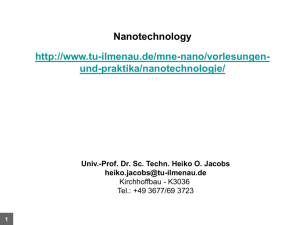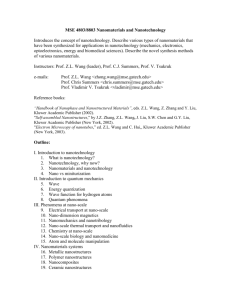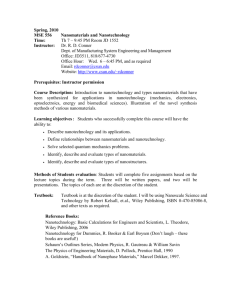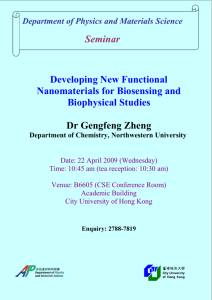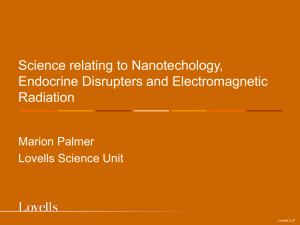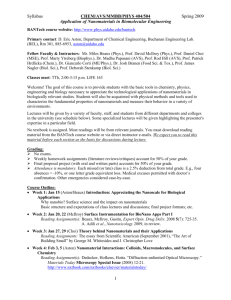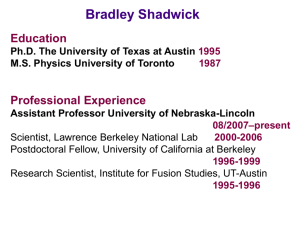Proposal Date: April 12, 2011
advertisement
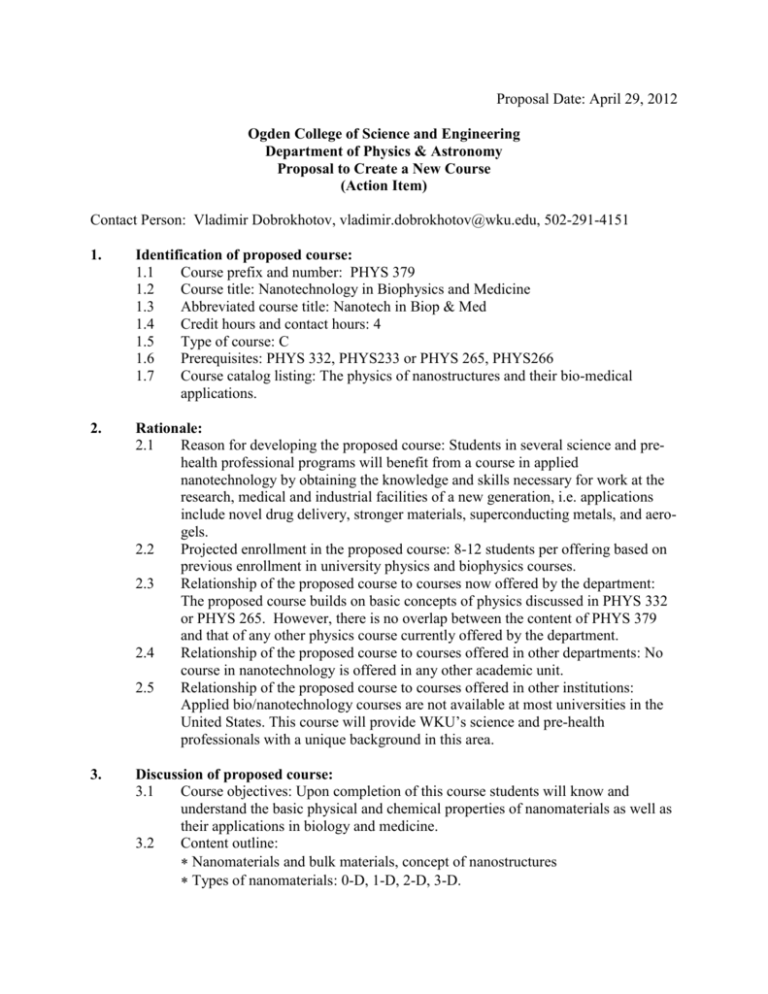
Proposal Date: April 29, 2012 Ogden College of Science and Engineering Department of Physics & Astronomy Proposal to Create a New Course (Action Item) Contact Person: Vladimir Dobrokhotov, vladimir.dobrokhotov@wku.edu, 502-291-4151 1. Identification of proposed course: 1.1 Course prefix and number: PHYS 379 1.2 Course title: Nanotechnology in Biophysics and Medicine 1.3 Abbreviated course title: Nanotech in Biop & Med 1.4 Credit hours and contact hours: 4 1.5 Type of course: C 1.6 Prerequisites: PHYS 332, PHYS233 or PHYS 265, PHYS266 1.7 Course catalog listing: The physics of nanostructures and their bio-medical applications. 2. Rationale: 2.1 Reason for developing the proposed course: Students in several science and prehealth professional programs will benefit from a course in applied nanotechnology by obtaining the knowledge and skills necessary for work at the research, medical and industrial facilities of a new generation, i.e. applications include novel drug delivery, stronger materials, superconducting metals, and aerogels. 2.2 Projected enrollment in the proposed course: 8-12 students per offering based on previous enrollment in university physics and biophysics courses. 2.3 Relationship of the proposed course to courses now offered by the department: The proposed course builds on basic concepts of physics discussed in PHYS 332 or PHYS 265. However, there is no overlap between the content of PHYS 379 and that of any other physics course currently offered by the department. 2.4 Relationship of the proposed course to courses offered in other departments: No course in nanotechnology is offered in any other academic unit. 2.5 Relationship of the proposed course to courses offered in other institutions: Applied bio/nanotechnology courses are not available at most universities in the United States. This course will provide WKU’s science and pre-health professionals with a unique background in this area. 3. Discussion of proposed course: 3.1 Course objectives: Upon completion of this course students will know and understand the basic physical and chemical properties of nanomaterials as well as their applications in biology and medicine. 3.2 Content outline: Nanomaterials and bulk materials, concept of nanostructures Types of nanomaterials: 0-D, 1-D, 2-D, 3-D. Mechanical properties of nanostructures Electrical and thermal properties of nanostructures Optical properties of nanostructures * Nanoscale devices and nanofabrication methods * Biological and chemical functionalization of nanostructures, hybrid nanostructures * Application of nanomaterials in cell biology Nanomaterials for medical diagnostics and treatment Chemical sensors and electronic nose technology Nanocomposites and reinforcement of materials 3.3 Student expectations and requirements: Performance will be evaluated based upon exams, participation in laboratory activities, and written laboratory reports. 3.4 Nanotechnology in Biology and Medicine: Methods, Devices, and Applications, Tuan Vo-Dinh, Taylor & Francis Group LLC, 2007 4. Resources: 4.1 Library resources: See attached library resource form and bibliography. 4.2 Computer resources: No new additional resources required. 5. Budget implications: 5.1 Proposed method of staffing: Existing faculty will teach this course. 5.2 Special equipment needed: none 5.3 Expendable materials needed: none 5.4 Laboratory materials needed: none 6. Proposed term for implementation: Spring 2012 7. Dates of prior committee approvals: Department of Physics & Astronomy: ___April 27, 2011____ OCSE Curriculum Committee ____May 5, 2011_____ Undergraduate Curriculum Committee ___________________ University Senate ___________________ Attachment: Bibliography, Library Resources Form, Course Inventory Form
